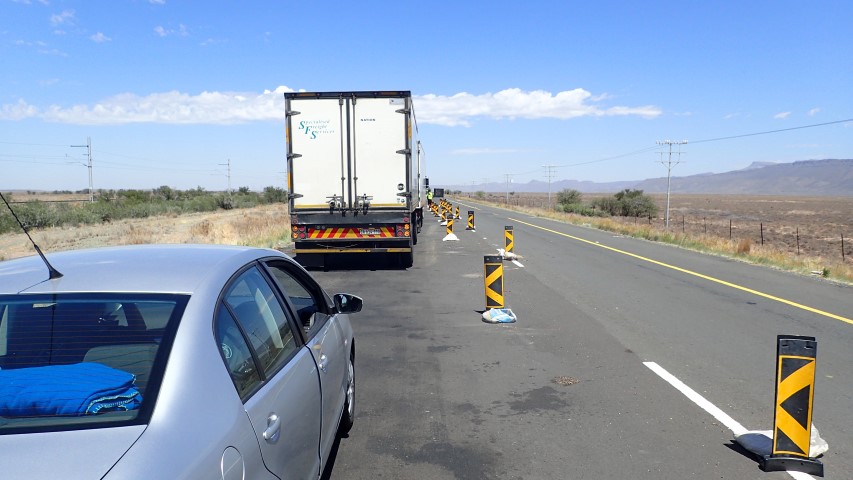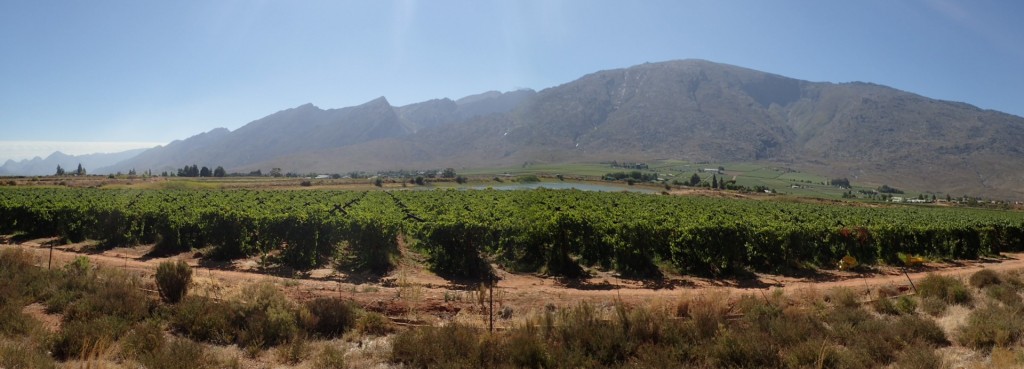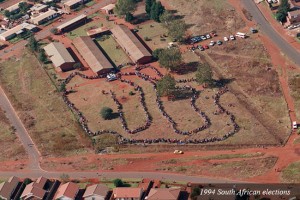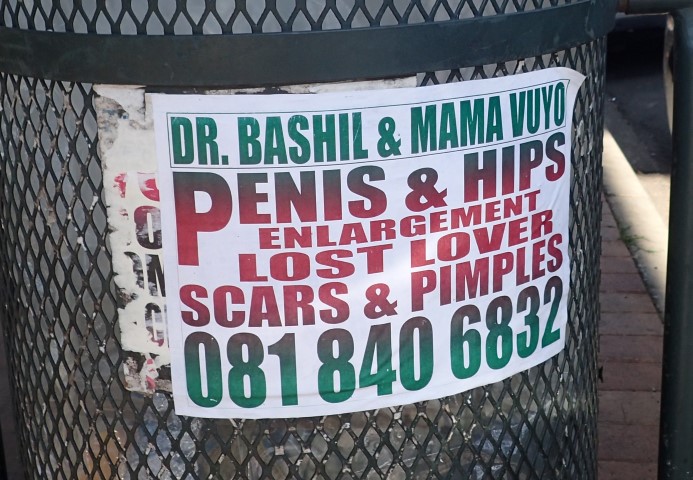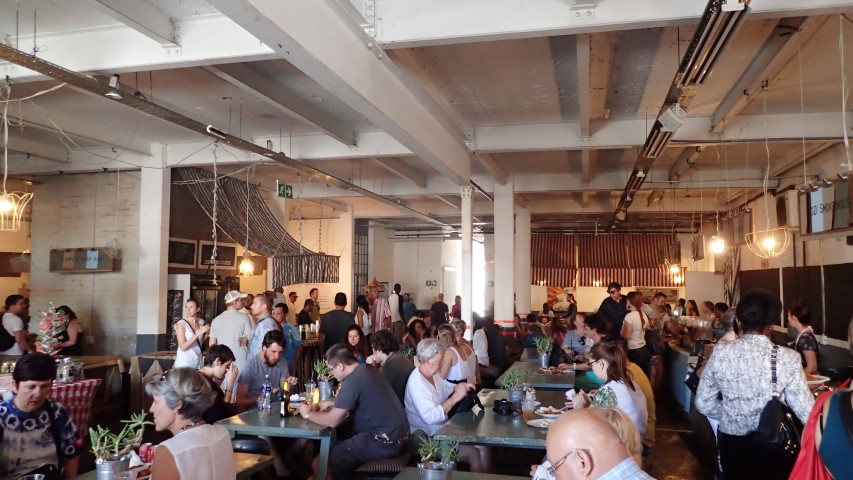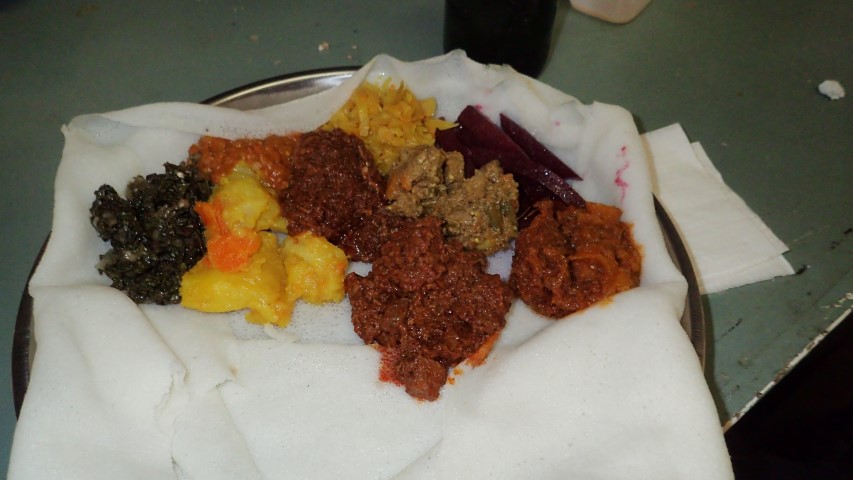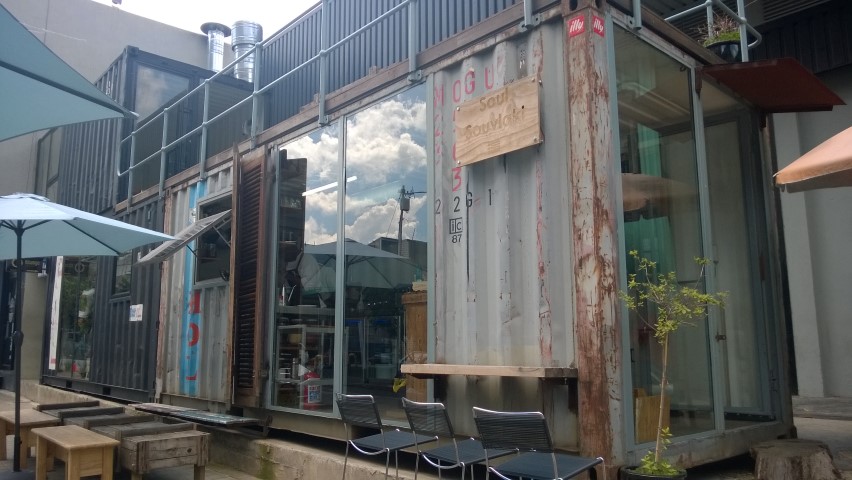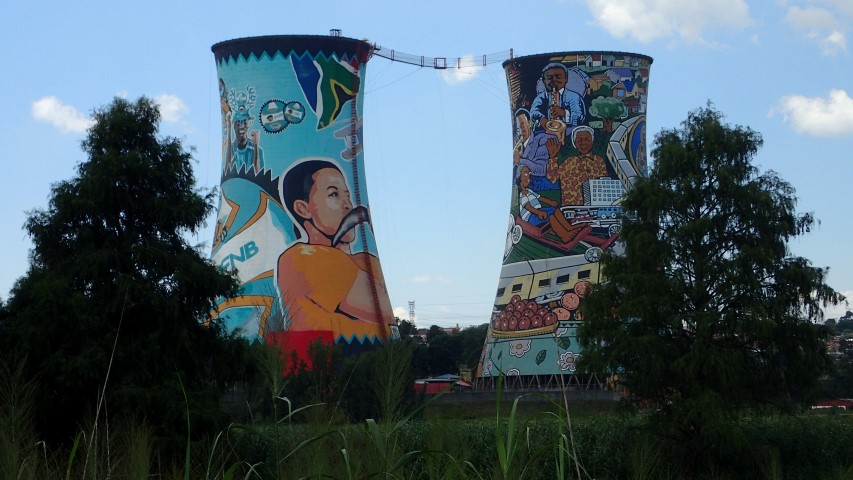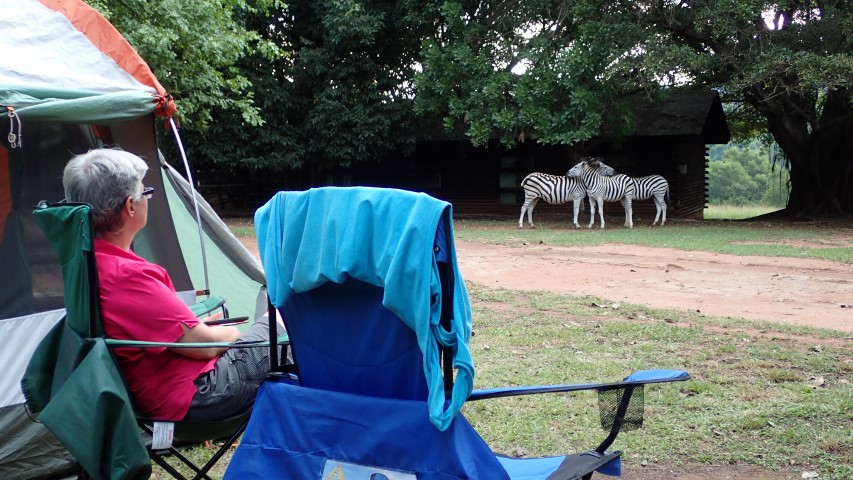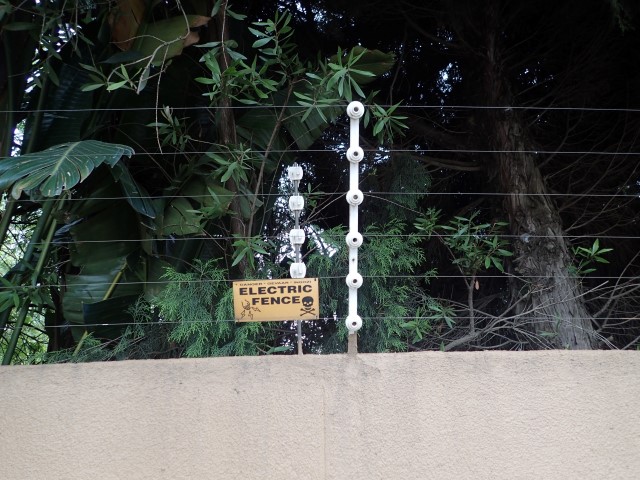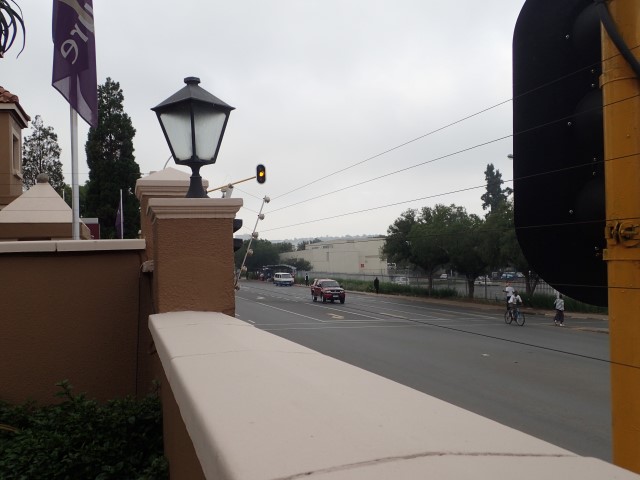We got to Cape Town / Kaapstad / or just CT yesterday evening. 2 days, 1400 kms from Joburg, with an overnight stop at Colesburg on the way. A lot of it was driving through the Karoo, a semi-desert region that covers much of the lower third of the country. Greg’s dad Ron commented on how green everything looked when we were traveling north … as we headed south, it looked more like home in summer. At times it felt like we were driving through the Outback, or through Utah, and at one point the mountains to the east looked exactly like the lower Flinders Rangers.
We spent the night at the only caravan park in Colesburg, but stayed in a ‘bungalow’ rather than put our tent up. The bungalow was only about $15 more than a tent site on gravel with no shade, so it took about a split second to make that decision. Colesburg is obviously THE halfway point between JHB and CT. It’s about 680kms from JHB, and has heaps of accommodation – pubs, B&Bs, guesthouses, cabins. Bit surprising that there was only one caravan park, but then, it only had a couple of caravans in it, and we didn’t see any on the road. Most of the traffic on the N1 freeway was trucks. Loads of trucks.
About 200kms from CT, we drove down into a valley into vineyards – what a spectacular view! Mountains on both sides, with a green valley full of vines. It looked absolutely beautiful until we got a bit closer and saw the ugly side – shanty towns full of tiny corrugated iron huts where the workers live, with a new section of more substantial dwellings that were the size of a double garage. We passed a sign on the freeway warning motorists to ‘beware of robbers selling stolen grapes’. About 500 metres along the road, we spotted our first ‘robber selling stolen grapes’! Beautiful looking grapes, but I can’t imagine anyone actually managing to stop on the freeway anyway, it was a very busy stretch of road.
Driving into Cape Town was pretty easy, even in afternoon peak hour traffic. Freeway for all but about the last 10kms, and we found the apartment with no trouble. We’re staying in Observatory, affectionately known as Obz, which seems to be a pretty trendy part of town, and has been described as the city’s most bohemian suburb. The apartment is a studio on the top floor of a large building that has a catering company on the ground floor and a climbing gym/camping store opposite. You can see a couple of photos here, including a glimpse of Table Mountain in a photo that was taken from the kitchen window. It was quite a thrill, seeing Table Mountain as we drove into CT. I’ve gotten used to the idea that we’re actually in Africa, but I’m really looking forward to visiting the Cape of Good Hope – it’s one of those places that I learnt about at school, but never thought I’d get to see.
We went out to find some dinner last night, just up to the local shops in Observatory. There were at least a dozen cafes and restaurants offering all kinds of cuisines, but on our host’s recommendation we went to Cafe Ganesh, which offers ‘Cape Malay’ food and African music. It started in the 1970s and attracts locals, students, artists, musicians and the occasional tourist. I had Umngqusho with Mutton Stew, Greg had an Ostrich and Lamb burger with chips. Umngqusho is a Xhosa dish made with sugar beans, samp (cracked white corn), onions & butter. Apparently it was Nelson Mandela’s favourite food, and to pronounce it properly the ‘gqu’ sound is actually a click of the tongue. I’ll have to practice a lot before I can get it right. The food was delicious, cheap and my plate was so full, I couldn’t finish it all.
We’re hearing a lot more Africaans here than we heard further north, and a lot of the street signs are in Africaans. Lots more Africaans-language newspapers and magazines.
From the northern-most point of this trip, Kasane, to Cape Town is around 2,500kms, which is about a quarter of the length of Africa. Greg is sitting here researching 4WD hire for our next visit here. As other friends have said, this place gets under your skin.
And now, a whinge about the second rental car we’ve got. You really only need to read it if you’re keen, or if you’re thinking of purchasing or renting a VW Polo.
In a word, don’t!
Greg ordered a Corolla sedan or equivalent from Avis, and they gave him this Polo instead. Surprising as usually rental car companies do an automatic upgrade rather than a downgrade, but maybe the Avis rep thought she was being nice by giving him an almost-new car. 760kms on the odometer. But what a pile of plastic rubbish! It’s much smaller than the Corolla we had when we started the trip, heaps less space in the boot and on the back seat.
Is there a law of physics that states that the amount of stuff you have expands or contracts to fit the available space? If it hasn’t already been claimed, let’s name it “Judy & Greg’s law”.
We had everything fitted into the Corolla very nicely, but in this rubbishy Polo, it’s all just crammed in wherever we can squeeze it. There are 3 narrow slots around the front passenger seat – one in the door, one under the glovebox and one at the side of the seat, and I have no idea why they are there – too thin to put anything in, they’re really just a waste of plastic. Whenever we lock or unlock the car, it beeps. To unlock the passenger doors, you have to press the unlock button 3 times, so that’s 6 annoying beeps. The only way to unlock the boot is via the clicker-thingy, no button to open the boot in the car, and it beeps too! Greg had trouble starting it this morning, so we’re not even all that confident that we’re going to get it all the way back to JHB. It really is a cheap heap of crap.
